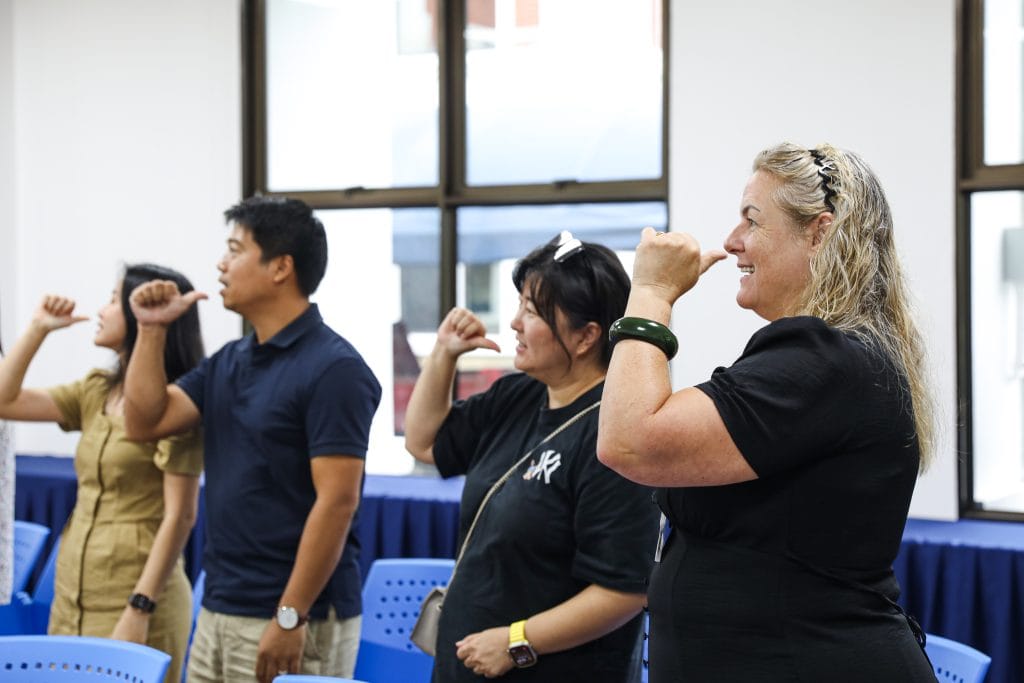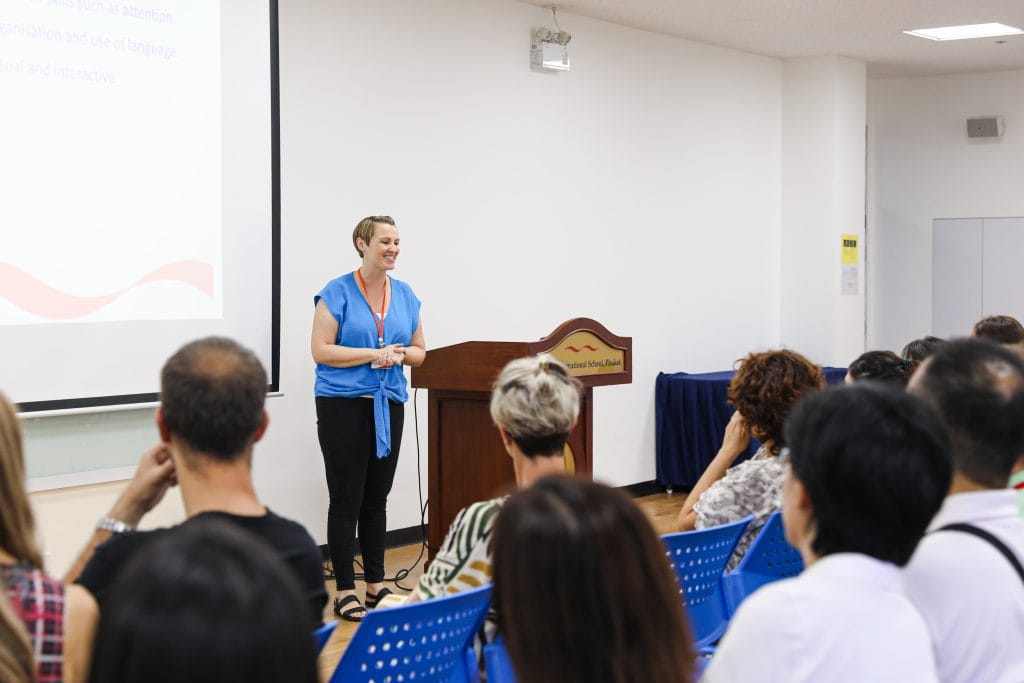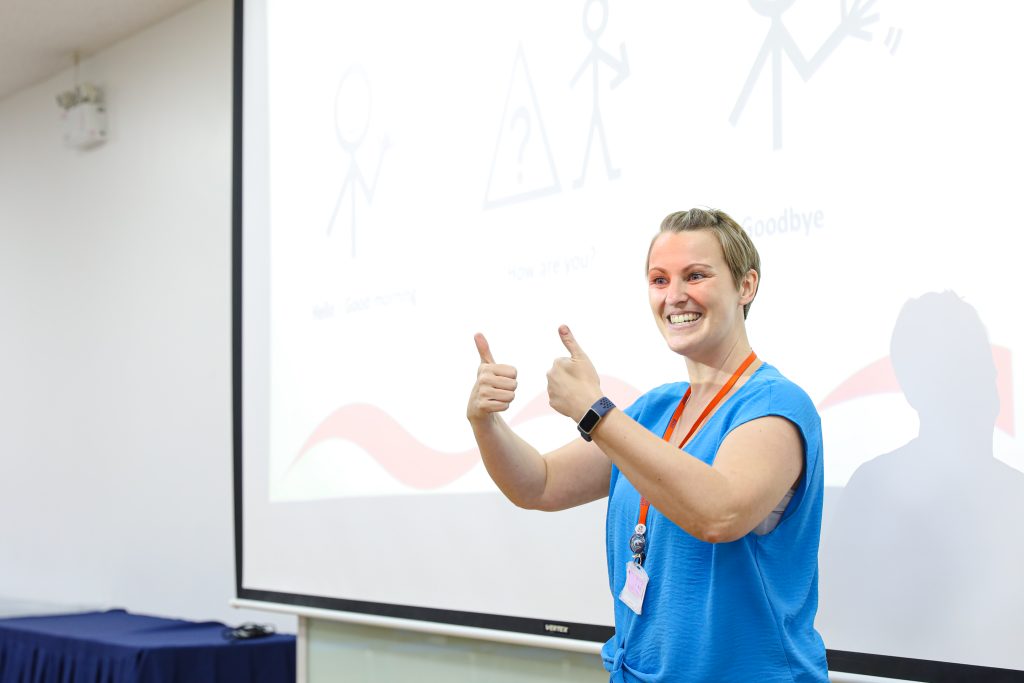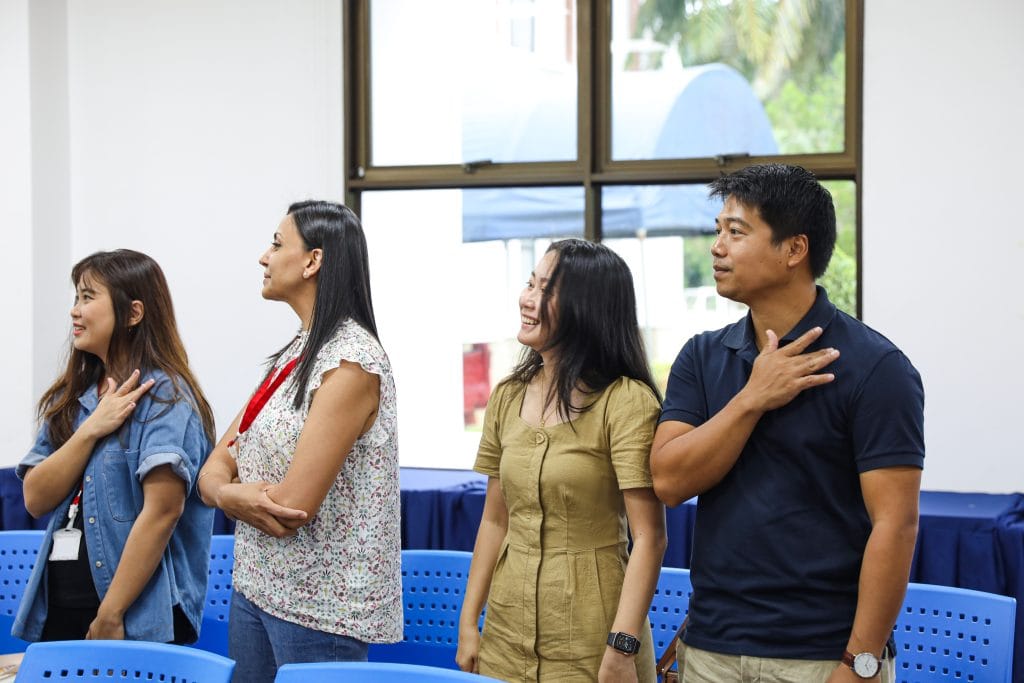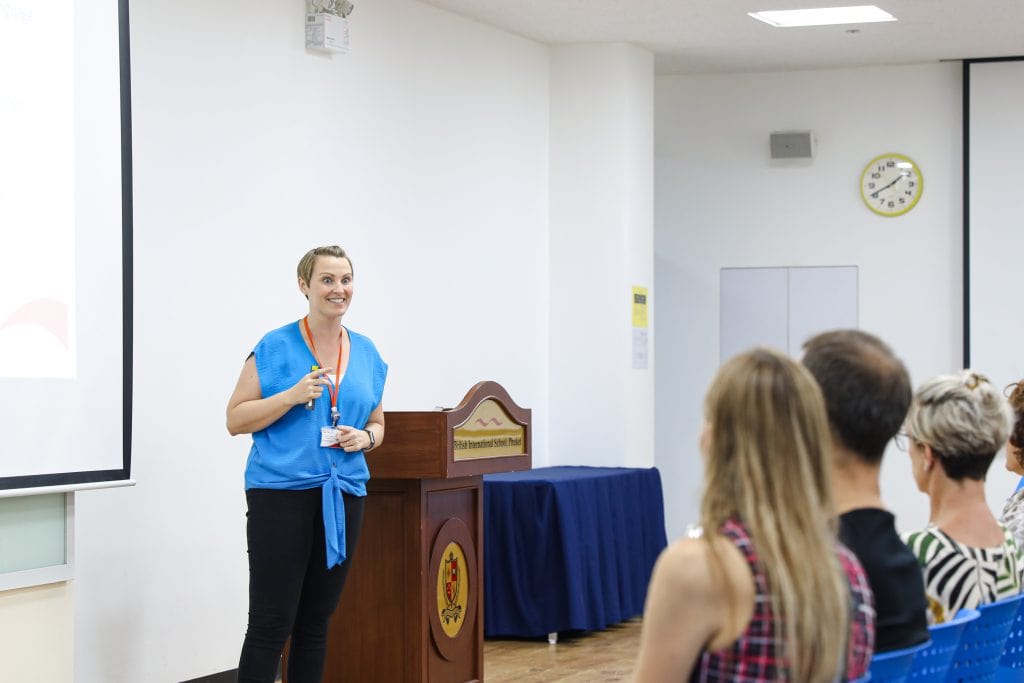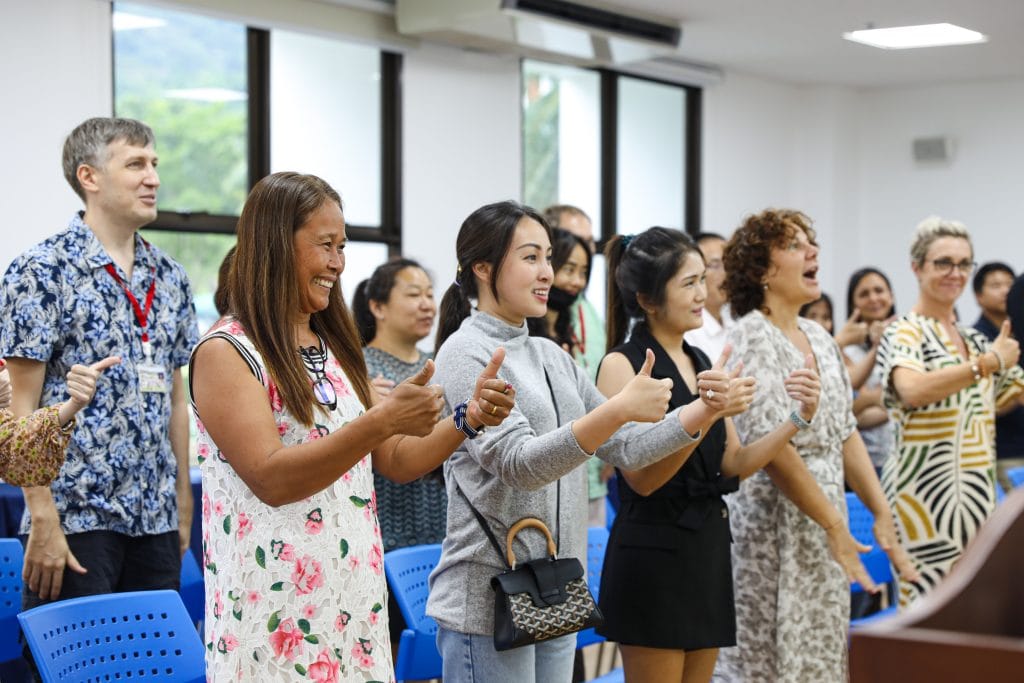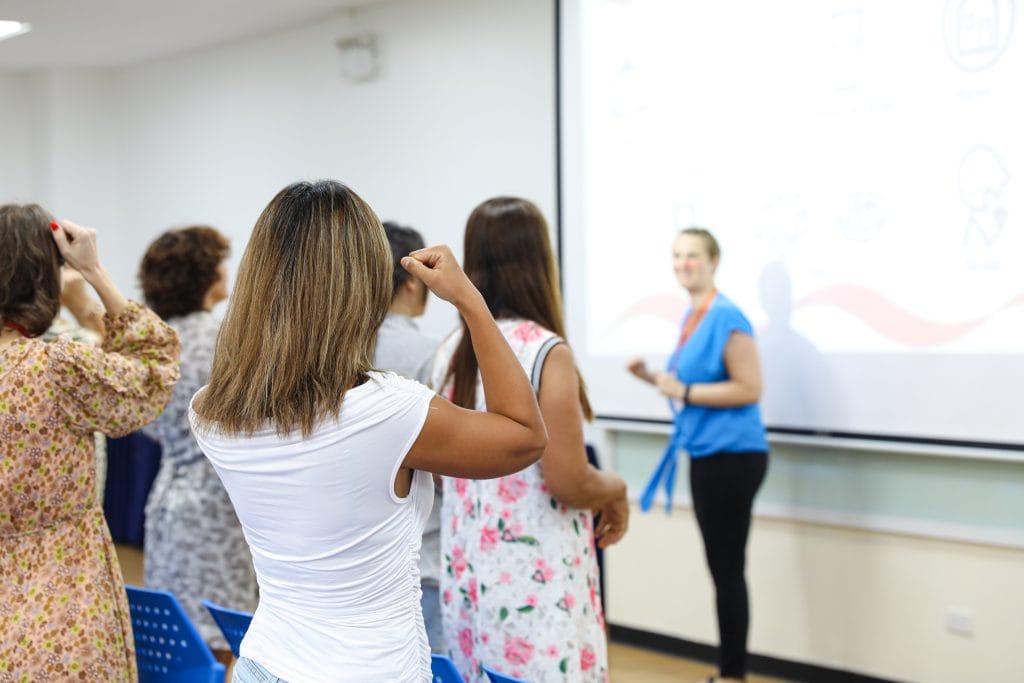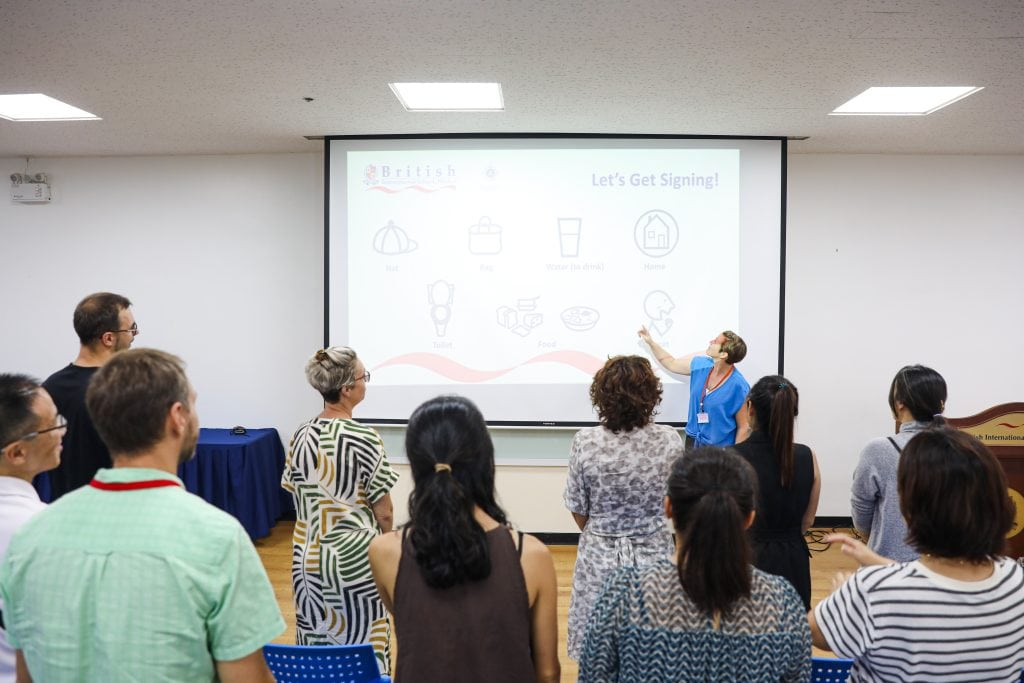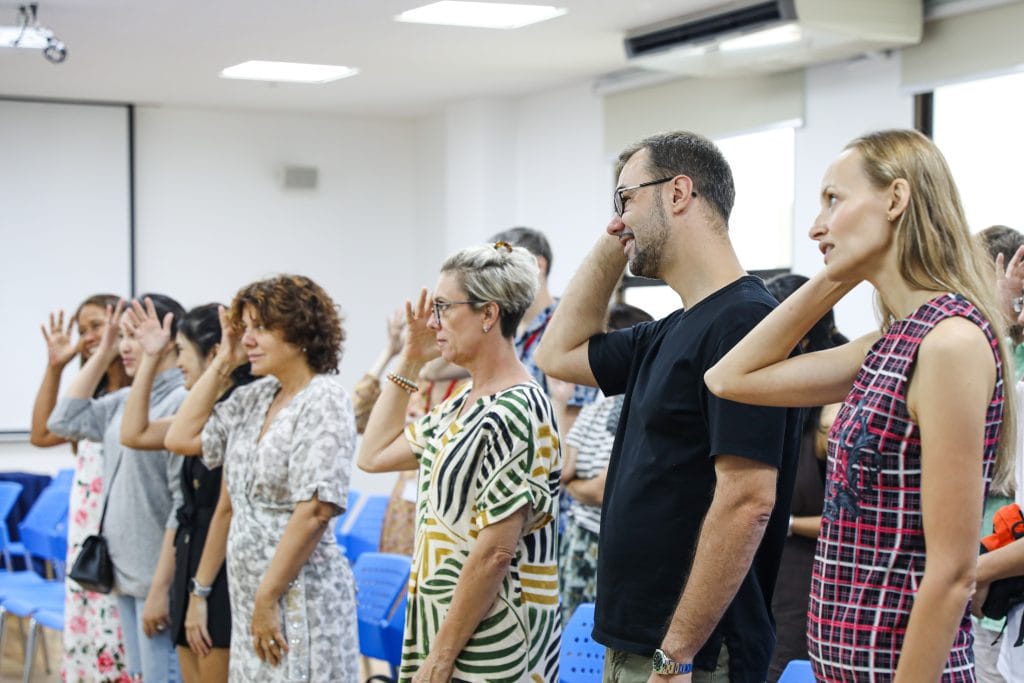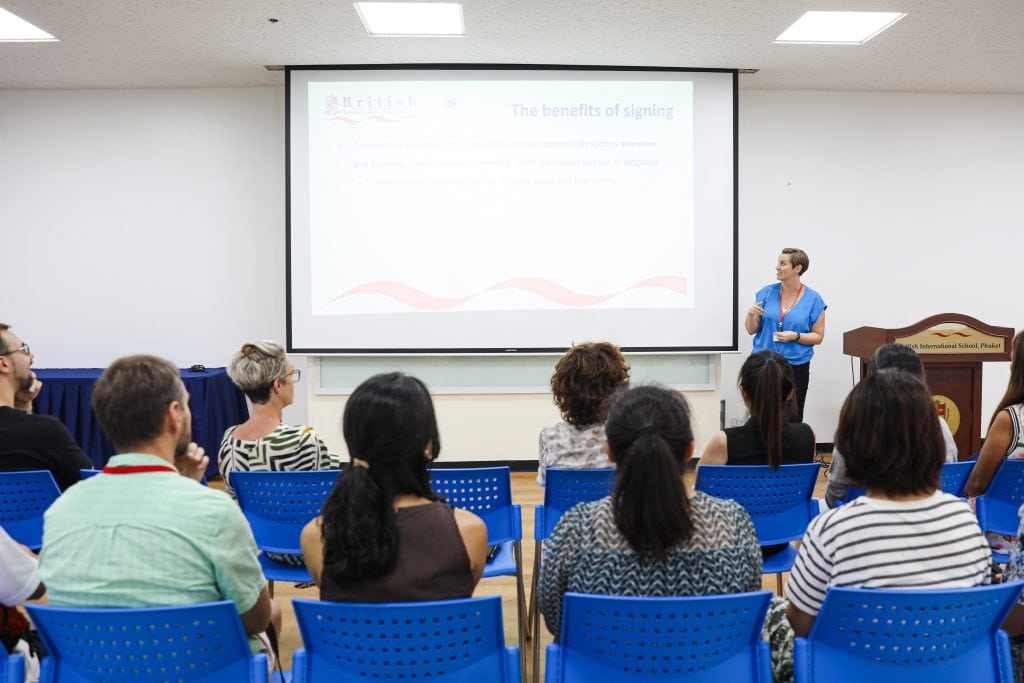| Getting your Trinity Audio player ready... |
Being able to communicate is one of the most important skills we need in life. Almost everything we do involves communication of some form. Everyday tasks such as asking questions, expressing our needs, and learning at school all rely on our ability to communicate with each other. Communication is also essential for interacting with others, making friends and having fun. Communication does not just involve speaking – we use our hands, faces and bodies to express ourselves too.
That’s why the Early Years team at BISP have started to sign! The use of signing and natural gestures can play an important part in supporting functional communication skills and helping children connect with the people around them. The teachers and children in Little Ducks, Nursery and Reception have started to use signs with all our children, starting with signs to express their feelings as well as including them in songs and stories. Parents have also been encouraged to try this at home and were welcomed to a practical workshop facilitated by BISP Early Intervention Specialist, Hayley Thomas. During the workshop, parents were taught a range of basic signs that the children are using within the learning environment. Parents also were taught a range of basic signs and learned how using gestures and signing with spoken words can help support all children in developing their language and communication skills, as well as being a shared fun activity to do with children.
How signing works
With Makaton signing, signs are used with speech in spoken word order. It is extremely flexible and can be used with anybody and research has shown that signs and gestures are easier to learn than spoken words. Children and adults can use Makaton to let others know what they want, make choices, share information and understand more. This helps build and develop important communication and language skills.
It also helps support attention as the highly visual and interactive aspect of signing can help gain and sustain a child’s attention much more effectively than words alone. The idea behind signing is that the main idea of any message is emphasised by the use of signs and gestures. For example, when signing the sentence “please stop playing and come and eat your lunch” the key words to be signed would be ‘stop’, ‘playing’, ‘come’ and ‘eat’. This helps the child to understand the main points of the instruction.
Another benefit of signing with speech is that it naturally helps to slow us down. This allows children extra time to process spoken information and understand what is being said to them. When we use speech and sign together, we naturally slow ourselves down and reduce the amount of information given by using simple, repetitive sentences.
Who uses signing?
Everyone! We use signs naturally in our day-to-day communication. However, signs are used more frequently in a structured way by:
- Mainstream schools – many schools regularly use signs with spoken words to support all children to develop communication, language and literacy skills
- People looking after babies and young children- signing while speaking, has been shown to encourage the development of communication and language skills.
- Children developing their language and literacy skills
- Children and adults with communication difficulties
If you would like to join us in learning sign, why not subscribe to our BISP Signing YouTube channel where you will find our ‘Sign of the Week’ videos – where staff and students help you learn a new sign each week, and much more.

